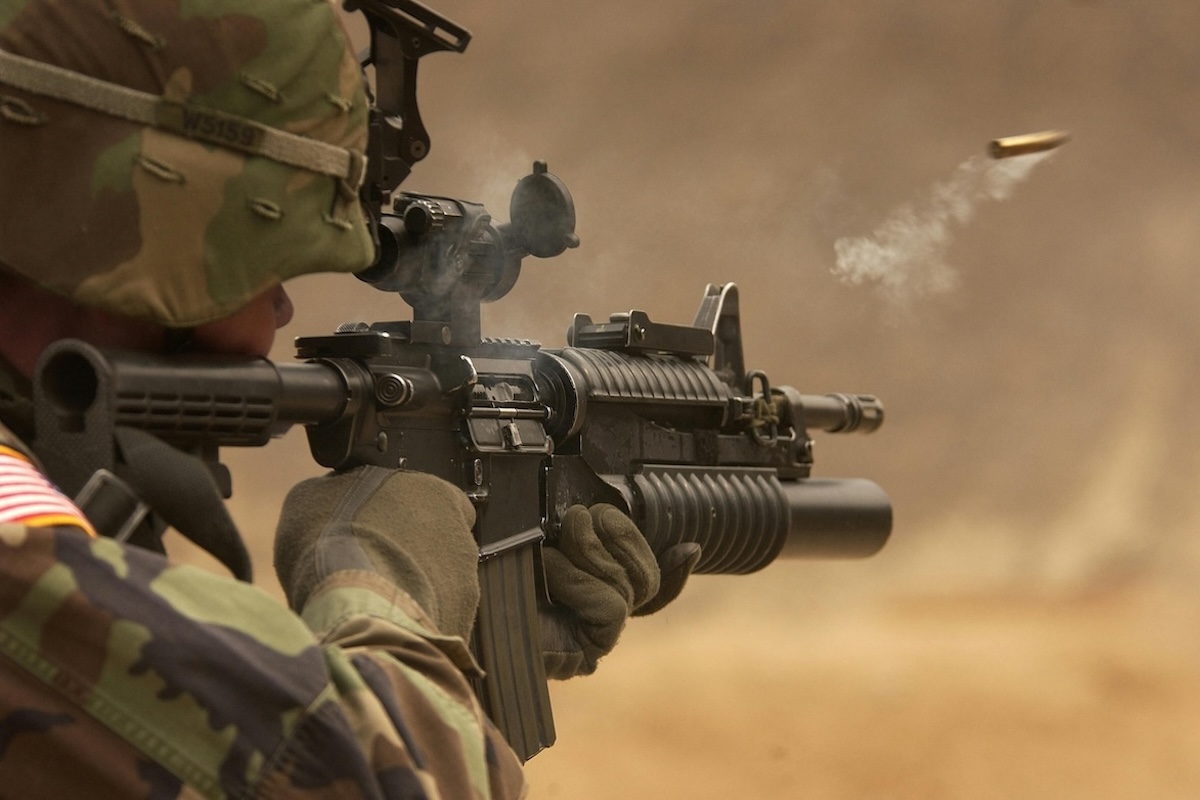Understanding the Differences Between ITAR and EAR

Article Summary
ITAR regulates defense-related items, services, and technologies listed on the U.S. Munitions List (USML).
EAR governs dual-use and commercial items listed on the Commerce Control List (CCL).
ITAR focuses on military-specific items, while EAR covers commercial, military, and dual-use items.
Penalties include fines, loss of export privileges, and potential criminal charges.
By classifying items correctly, obtaining necessary licenses, and implementing robust compliance programs.
The International Traffic in Arms Regulations (ITAR) and the Export Administration Regulations (EAR) are the key frameworks that govern the export of items, information, and services from the United States, but they serve distinct purposes and apply to different regulatory jurisdictions.
- Export regulations and terminology vary for military (ITAR) & commercial items (EAR).
- Two export licensing portals: DECCS for military items and SNAP-R for commercial items.
- U.S. export regulations are all extra territorial.
- Penalties for export violations also vary depending on jurisdiction: ITAR vs. EAR.
The International Traffic in Arms Regulations (ITAR) and the Export Administration Regulations (EAR) are two key frameworks that govern the export of items, information, and services from the United States, but they serve distinct purposes and apply to different areas of regulation. While they share the common goal of regulating exports, their scopes, governing bodies, and the types of items they regulate set them apart. ITAR primarily focuses on military and defense-related items, while EAR oversees the export of dual-use items—those with both commercial and military applications. Companies involved in global trade must adhere to these regulations to avoid severe penalties and safeguard sensitive technologies.
1. Scope and Regulated Items
- ITAR is administered by the U.S. Department of State's Directorate of Defense Trade Controls (DDTC) and governs items listed on the United States Munitions List (USML). These items are inherently defense-related, such as weapons, military vehicles, and associated technical data. ITAR compliance is aimed at preventing sensitive defense technologies from falling into the wrong hands.
- EAR, on the other hand, is managed by the U.S. Department of Commerce's Bureau of Industry and Security (BIS) and regulates items on the Commerce Control List (CCL). These items are often called dual-use, meaning they have both civilian and military applications. Examples include certain electronics, software, and materials. EAR compliance ensures that exports of these items do not compromise national security or foreign policy.
2. Licensing Requirements
- ITAR imposes stringent licensing requirements for the export of defense articles and services. Licenses must be obtained for nearly all exports covered under ITAR, regardless of the destination or the end user.
- EAR is more flexible and takes a risk-based approach. Not all items on the CCL require a license; instead, licensing requirements depend on the item's classification, the destination country, the end user, and the end use. EAR also includes license exceptions for specific scenarios, which reduce the regulatory burden for compliant businesses.

3. Applicability and Jurisdiction
- ITAR has extraterritorial reach, meaning that U.S. persons and entities must comply with ITAR regulations regardless of where they operate in the world. ITAR-regulated items remain under ITAR jurisdiction indefinitely, even after being exported.
- EAR also applies extraterritorially but is less stringent in terms of "deemed exports" and the long-term jurisdiction of exported items. For example, EAR allows for reclassification or decontrol of certain items after specific conditions are met, such as widespread commercial use.
4. Penalties for Non-Compliance
- Violating ITAR regulations can lead to severe penalties, including fines of up to $1 million per violation and imprisonment for individuals. Additionally, non-compliance can result in reputational harm and debarment, which prohibits the offending party from future dealings in ITAR-controlled items.
- EAR violations can also result in hefty penalties, but these are typically less severe than those under ITAR. Civil penalties under EAR can reach $300,000 per violation or twice the value of the transaction, while criminal penalties may include fines and imprisonment. It is hard to put a monetary value on the negative publicity that can accompany an export violation.
Final Takeaways
ITAR and EAR are fundamental to U.S. export control policies, each addressing different aspects of national security and foreign policy. ITAR's focus on defense-related items and stringent controls contrast with EAR's broader coverage of dual-use items and its more flexible, risk-based approach. Compliance with these regulations is essential for any organization involved in international trade, as the consequences of non-compliance can be severe. By understanding the differences between ITAR and EAR, businesses can navigate the complexities of export controls and ensure adherence to U.S. laws. Through proactive compliance measures, organizations can protect sensitive technologies while maintaining their competitive edge in the global market.
If you have any other topics or questions in mind, please visit www.ctp-inc.com or reach out directly to Rick Phipps at rphipps@ctp-inc.com.
Key Points
What is ITAR, and what does it regulate?
The International Traffic in Arms Regulations (ITAR) is a set of U.S. government regulations that control the export of defense-related items, services, and technologies. ITAR is administered by the Directorate of Defense Trade Controls (DDTC) under the U.S. Department of State. Key features include:
- Scope: ITAR covers items listed on the U.S. Munitions List (USML), which includes military-specific equipment, weapons, and technologies.
- Purpose: To ensure that sensitive defense technologies do not fall into the hands of unauthorized foreign entities.
- Licensing: Exporters must obtain licenses for ITAR-controlled items, and strict access controls are required to prevent unauthorized use.
What is EAR, and how does it differ from ITAR?
The Export Administration Regulations (EAR) is a set of U.S. regulations that govern the export of dual-use and commercial items. EAR is administered by the Bureau of Industry and Security (BIS) under the U.S. Department of Commerce. Key features include:
- Scope: EAR covers items listed on the Commerce Control List (CCL), which includes dual-use items (those with both civilian and military applications) and purely commercial goods.
- Purpose: To regulate exports that could impact U.S. national security, foreign policy, or economic interests.
- Licensing: EAR uses a risk-based approach, with licensing requirements depending on the item, destination, end-user, and end-use.
How do ITAR and EAR differ in scope and application?
- ITAR: Focuses exclusively on defense-related items and technologies, with stringent controls and licensing requirements.
- EAR: Covers a broader range of items, including dual-use and commercial goods, with a more flexible, risk-based approach to licensing.
- Item Lists: ITAR items are listed on the USML, while EAR items are listed on the CCL.
What are the consequences of non-compliance with ITAR or EAR?
Non-compliance with ITAR or EAR can result in severe penalties, including:
- Fines: Ranging from thousands to millions of dollars.
- Loss of Export Privileges: Companies may lose the ability to export goods or services.
- Criminal Charges: Deliberate violations can lead to imprisonment.
- Reputational Damage: Non-compliance can harm a company’s reputation and business relationships.
How can businesses ensure compliance with ITAR and EAR?
To ensure compliance, businesses should:
- Classify Items Correctly: Determine whether items fall under ITAR (USML) or EAR (CCL).
- Obtain Necessary Licenses: Apply for export licenses through the appropriate portals (DECCS for ITAR, SNAP-R for EAR).
- Implement Compliance Programs: Develop internal policies and procedures to manage export activities.
- Train Employees: Provide regular training on ITAR and EAR regulations.
- Conduct Due Diligence: Verify end-users and end-uses to prevent unauthorized exports.
Why is understanding the differences between ITAR and EAR important?
Misclassifying items or failing to comply with the correct regulations can lead to significant legal and financial consequences. Understanding the differences helps businesses:
- Avoid penalties and legal issues.
- Protect sensitive technologies.
- Maintain good standing with regulatory authorities.










